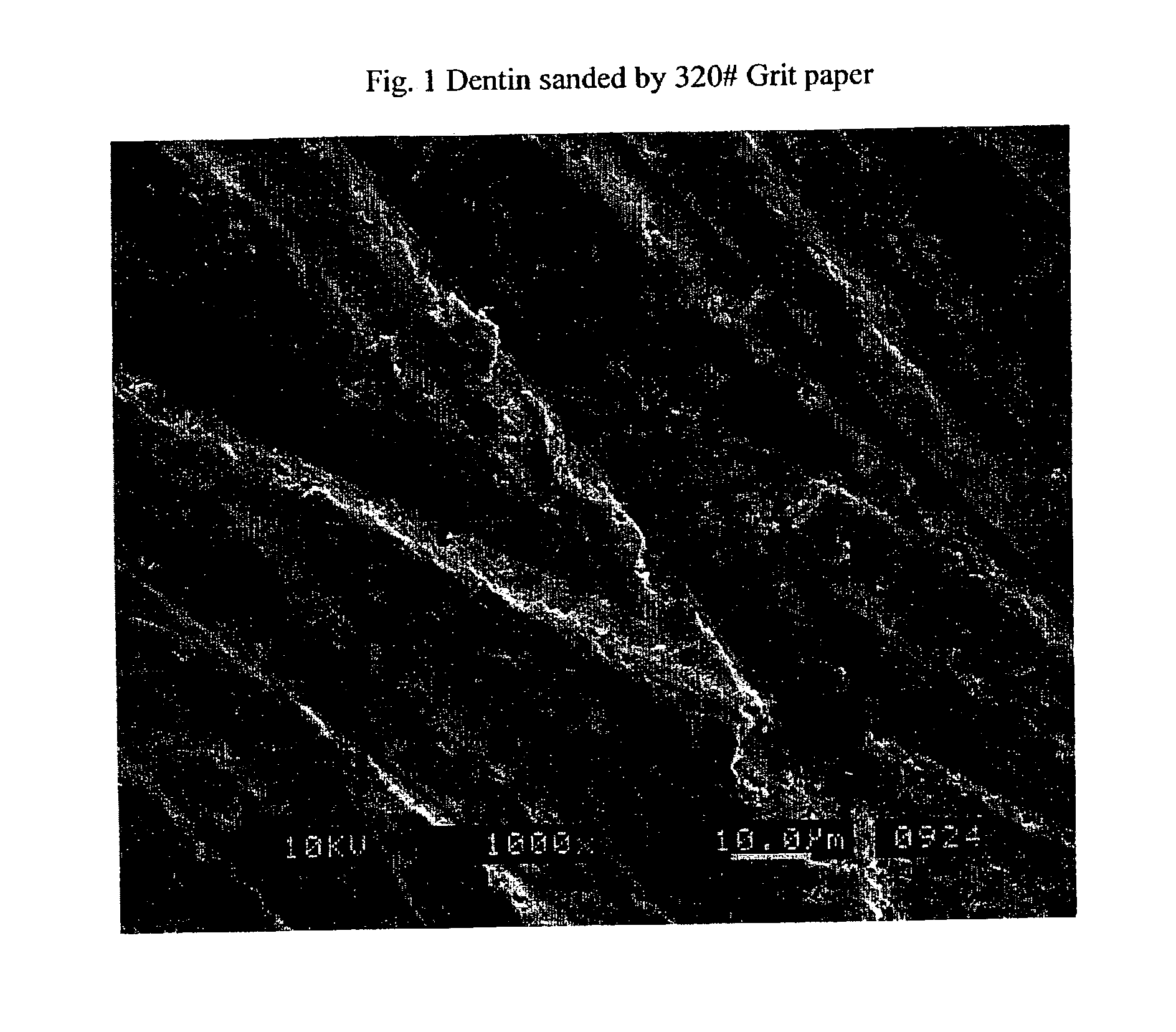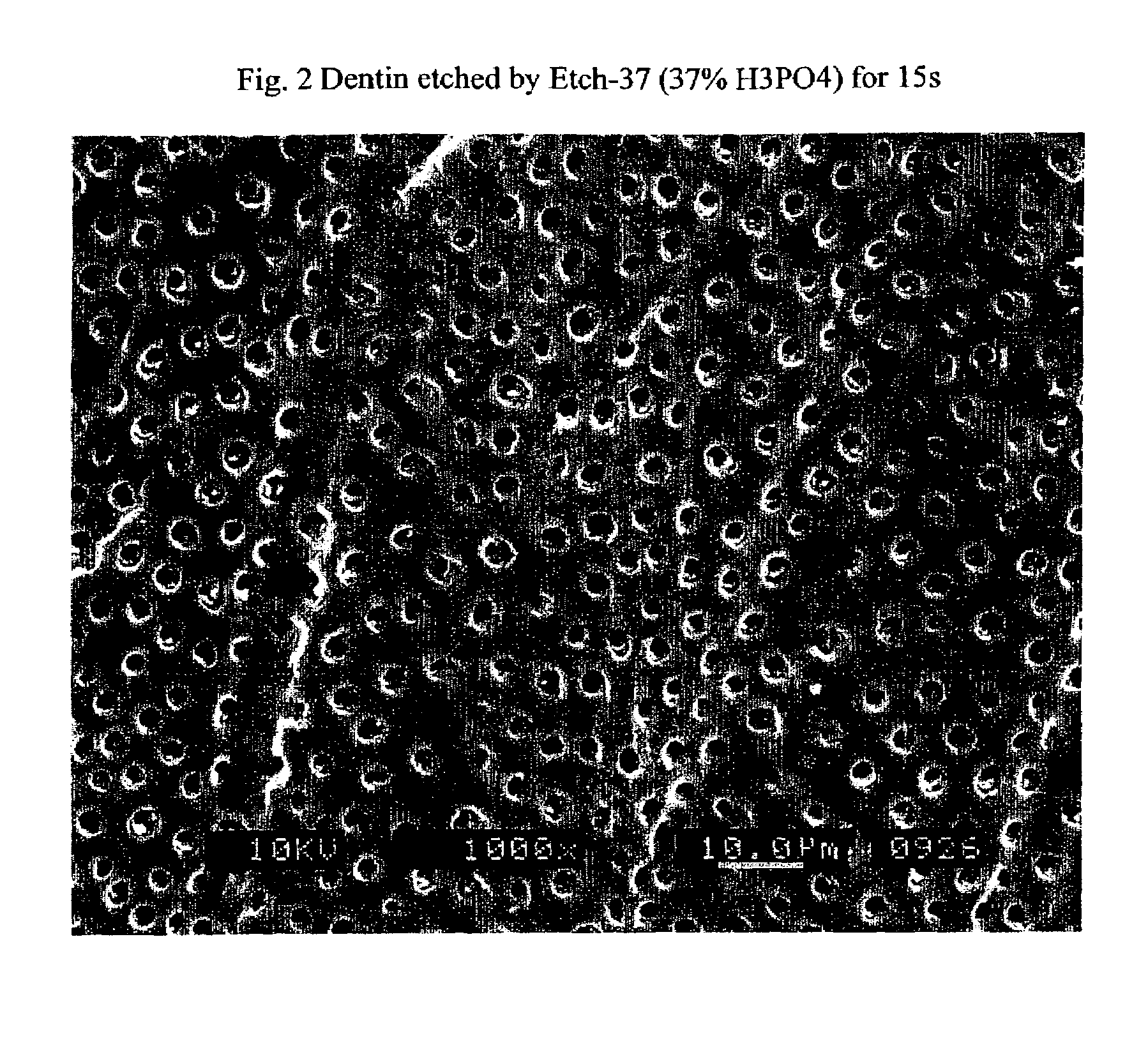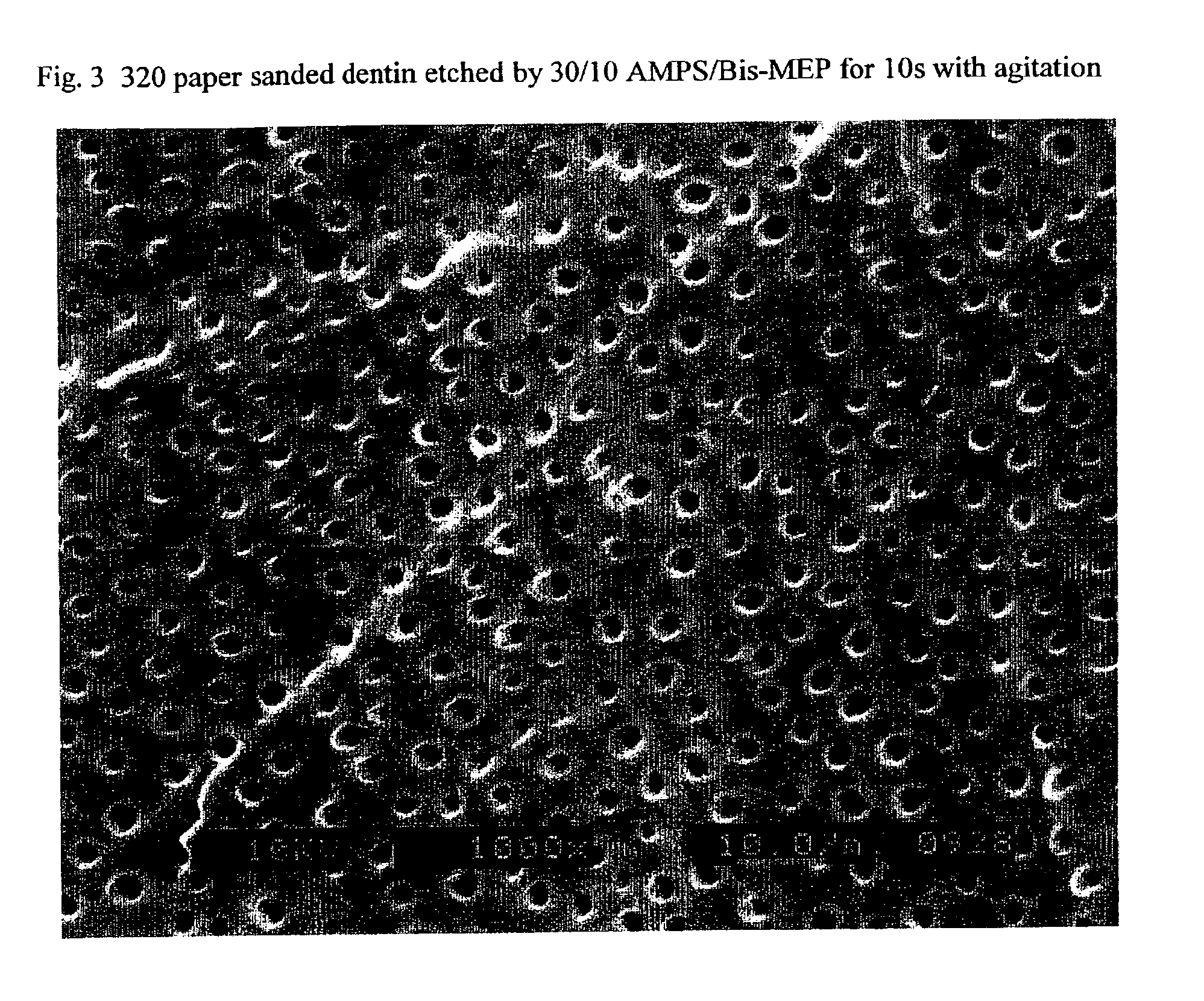Stable self-etching primer and adhesive bonding resin compositions, systems, and methods
a self-etching, adhesive bonding technology, applied in the direction of impression caps, prostheses, teeth caps, etc., can solve the problems of increasing the treatment time of patients, complicating the restorative process, and complicating the overall restorative process, so as to achieve high bonding strength, long shelf life, and high bonding strength
- Summary
- Abstract
- Description
- Claims
- Application Information
AI Technical Summary
Benefits of technology
Problems solved by technology
Method used
Image
Examples
example 1
Preparation and Testing of Single Component Self-Etching Copolymerizable Composition Using SBA-HEMA, AMPS, SEMA and Bis-MEP on Both Dentin and Cut Enamel in LC Mode
[0090]SBA-HEMA monomer synthesis: The SBA-HEMA monomer was prepared according to the following method. Two moles of sulfobenzoic anhydride (SBA) was weighed into a flask to which was added 2.4 moles of 2-hydroxyethylmethacrylate (HEMA) along with 15 grams of triethylamine. The mixture was stirred and heated at 70–80° C. for one hour, during which time a clear solution resulted. At this time, the infrared spectrum of the product revealed the disappearance of the anhydride absorption bands.
[0091]SA-HEMA monomer synthesis: This monomer was prepared according to the procedure used to prepare SBA-HEMA set out above, but the starting anhydride for SA-HEMA is succinic anhydride (SA). Two moles of SA and 2.4 moles of HEMA were used for the synthesis of SA-HEMA monomer according to the SBA-HEMA procedure.
[0092]The following abbrev...
example 2
Preparation and Testing of Two Component Self-Etching Copolymerizable Compositions Using AMPS and Bis-MEP on Dentin in Both LC and SC Mode
[0103]Two component systems comprising a first Primer A solution containing a pH indicator, water and ethanol and a second Primer B solution containing self etching copolymerizable monomer compounds were prepared according to the following general methods.
[0104]Primer A:
[0105]In a beaker, place 98.985% by wt. DI water, 1.000% by wt. ethyl alcohol. Using an analytical balance weigh 0.015% by wt. Thymol blue sodium salt and add it into the beaker. Optionally, add BAC or CHXG at desired weight percentage into the same beaker. Place a magnetic stir bar in the beaker, cover the beaker to avoid evaporation of solvents, and allow stirring on a stirring plate until all the components are dissolved.
[0106]Primer B:
[0107]Add the desired weight percent of the first selected self etching copolymerizable liquid monomer, Bis-MEP, to a beaker, add the desired wei...
example 3
Testing Two Component Self-Etching Copolymerizable Composition Using AMPS and Bis-MEP on Cut Enamel in LC Mode
[0116]
TABLE 12Cut enamel SBS of self-etching primer with Primer B composition ofAMPS / Bis-MEP with OS or OS+ and BIS-FIL LC system12a SSBS, in MPaPrimer B AMPS (wt. %) / Bis-MEP (wt. %)30 / 1038 / 1040 / 10OSNA24.7(3.1)24.1(2.0)OS+18.1(4.8)22.2(4.7)23.6(2.2)12b USBS, in MPa (with OS)Primer B AMPS (wt. %) / Bis-MEP (wt.%)30 / 1040 / 10Cut Enamel USBS (MPa)29.4(4.5)31.6(4.3)
PUM
| Property | Measurement | Unit |
|---|---|---|
| temperature | aaaaa | aaaaa |
| bond strengths | aaaaa | aaaaa |
| bonding area | aaaaa | aaaaa |
Abstract
Description
Claims
Application Information
 Login to View More
Login to View More - R&D
- Intellectual Property
- Life Sciences
- Materials
- Tech Scout
- Unparalleled Data Quality
- Higher Quality Content
- 60% Fewer Hallucinations
Browse by: Latest US Patents, China's latest patents, Technical Efficacy Thesaurus, Application Domain, Technology Topic, Popular Technical Reports.
© 2025 PatSnap. All rights reserved.Legal|Privacy policy|Modern Slavery Act Transparency Statement|Sitemap|About US| Contact US: help@patsnap.com



